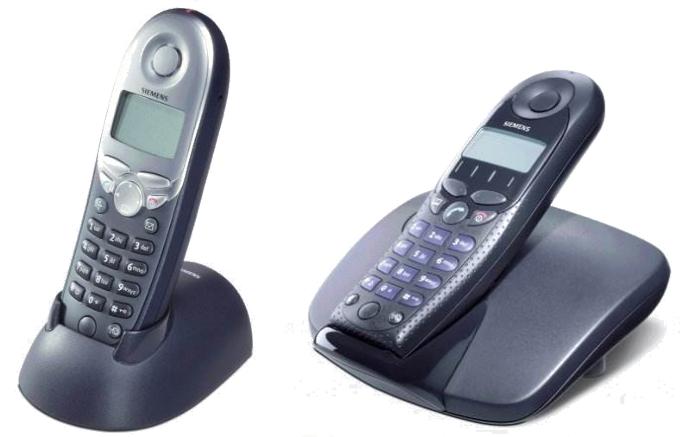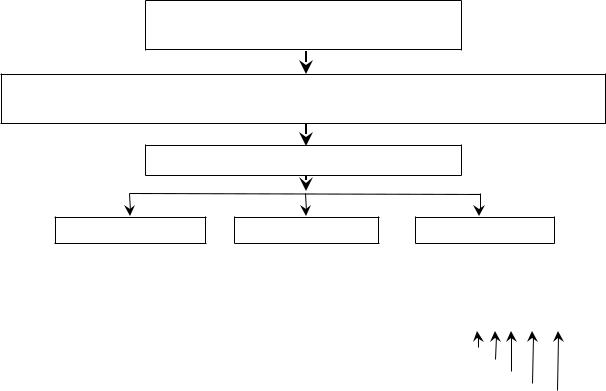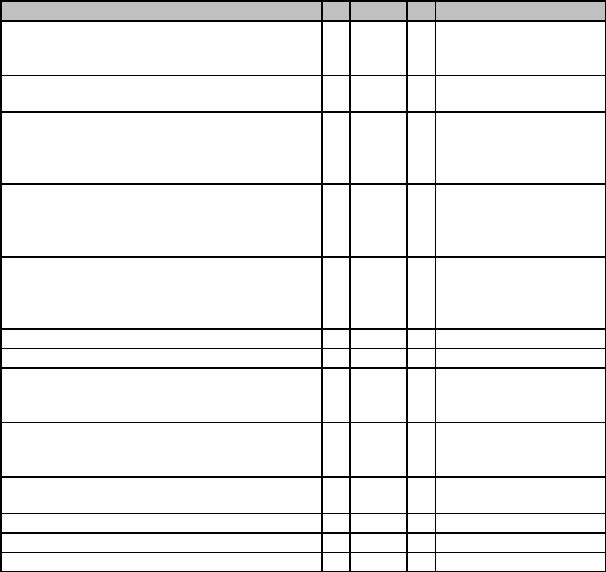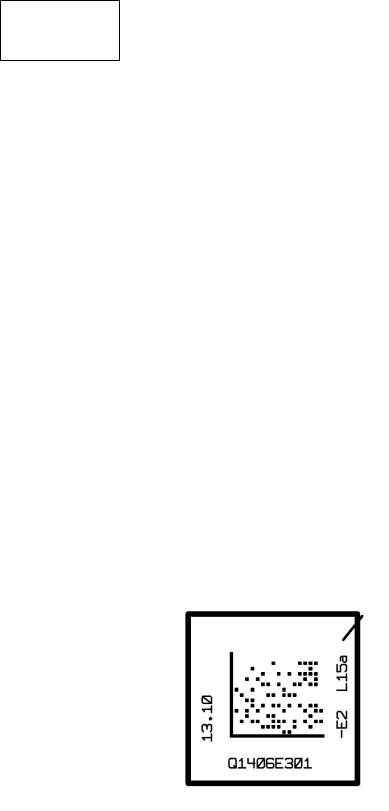Siemens Gigaset 4000 Classic, Gigaset 4000 Comfort, Gigaset 4015 Comfort, Gigaset 4010 Comfort, Gigaset 4010 Classic Service Manual
...
Service Manual
Gigaset 4010/ 15 Classic base station, Gigaset 4010/ 15 Comfort base station Gigaset 4000 Classic handset, Gigaset 4000 Comfort handset
Level 2.5
1 Table of contents |
|
|
1 TABLE OF CONTENTS.................................................................................................................................... |
2 |
|
2 ADDITIONAL FEATURES AND DIFFERENCES TO GIGASET 3000..................................................... |
3 |
|
2.1 |
DECT-SPECIFIC DETAILS............................................................................................................................. |
3 |
3 PROCEDURES.................................................................................................................................................... |
4 |
|
3.1 |
SERVICE PROCEDURES FOR GIGASET 4000 CLASSIC.......................................................................................... |
4 |
3.2 |
SERVICE PROCEDURES FOR GIGASET 4000 COMFORT........................................................................................ |
5 |
3.3 |
SERVICE PROCEDURES FOR GIGASET 4010/ 15 CLASSIC/ COMFORT BASE STATION.................................................. |
6 |
4 INFO STICKER/ LASERED IMPRINT AND STICKER ON MICROPROCESSOR............................... |
8 |
|
5 FAULT CODES................................................................................................................................................... |
9 |
|
6 FAULT DIAGNOSIS AND ELIMINATION.................................................................................................. |
10 |
|
6.1 |
FUNCTIONAL TEST.................................................................................................................................... |
10 |
6.2 |
RECOGNITION OF TYPICAL CUSTOMER PROBLEMS............................................................................................. |
12 |
6.3 |
CHECK OF COMPLETE SYSTEM WITH FAULT DESCRIPTION OF CUSTOMER................................................................ |
16 |
6.4 |
CHECK OF COMPLETE SYSTEM WITHOUT FAULT DESCRIPTION OF CUSTOMER........................................................... |
16 |
6.5 |
CHECK OF COMPONENT WITH FAULT DESCRIPTION OF CUSTOMER......................................................................... |
16 |
6.6 |
CHECK OF COMPONENT WITHOUT FAULT DESCRIPTION OF CUSTOMER.................................................................... |
16 |
6.7 |
BLOCK DIAGRAMS OF HANDSETS.................................................................................................................. |
17 |
6.7.1 Classic handset.................................................................................................................................... |
17 |
|
6.7.2 Comfort handset................................................................................................................................... |
18 |
|
6.8 |
REPAIR OF MOBILE UNIT GIGASET 4000 CLASSIC AND COMFORT....................................................................... |
19 |
6.8.1 Exploded view G4000 Classic............................................................................................................. |
20 |
|
6.8.2 Exploded view G4000 Comfort........................................................................................................... |
21 |
|
6.8.3 Disassembling...................................................................................................................................... |
22 |
|
6.8.4 Assembling........................................................................................................................................... |
29 |
|
6.8.5 Board Layout Gigaset 4000 Classic.................................................................................................... |
30 |
|
6.8.6 Board Layout Gigaset 4000 Comfort.................................................................................................. |
31 |
|
6.8.7 Mobile unit faulty due to humidity...................................................................................................... |
32 |
|
6.8.8 SLR (microphone-path faulty)............................................................................................................. |
33 |
|
6.8.9 RLR (earphone-path faulty)................................................................................................................. |
34 |
|
6.9 |
REPAIR OF BASESTATION GIGASET 4010/ 4015 CLASSIC/ COMFORT.................................................................. |
35 |
6.9.1 Exploded view...................................................................................................................................... |
35 |
|
6.9.2 Disassembling...................................................................................................................................... |
36 |
|
6.9.3 Assembling........................................................................................................................................... |
36 |
|
6.9.4 Board Layout Gigaset 4010 Classic (EU1 version)............................................................................ |
37 |
|
6.9.5 Board Layout Gigaset 4010 Comfort (EU1 version).......................................................................... |
38 |
|
6.9.6 Board layout Gigaset 4015 Classic (EU1 version)............................................................................. |
38 |
|
6.9.7 Board layout Gigaset 4015 Comfort (EU1 version)........................................................................... |
38 |
|
6.9.8 Charging problems.............................................................................................................................. |
39 |
|
6.9.9 Base station faulty due to lightning stroke.......................................................................................... |
40 |
|
2 Additional features and differences to Gigaset 3000
4000 Classic:
-Improved standby time up to 200 h (NiCd)
-Alphanumeric display (12 digits plus 2 lines for pictograms)
-Handset operation controlled via menu
-Date and time functions with protection against power failure
-Alarm call/ date reminder on display
-LED on top of the handset signalling MWI and incoming calls
-Directory with memory for 20 names plus numbers
4000 Comfort:
-Improved standby/ use time up to 350/ 23 h (NiMH: 1600 mAh)
-Large graphical display with 5 lines x 16 characters (101 x 61 pixel)
-Navigation key
-Tel.book for max. 200 entries
-Date and time functions with protection against power failure
-Alarm call/ date reminder on display
-LED on top of the handset signalling MWI and incoming calls
-Walky-Talky mode with second 4000 Comfort handset
-Handling of AM via handset like a mobile phone (4015 base station necessary)
-14 display languages
4010/ 15 Base stations:
-4 different base stations (4010/15 Classic and 4010/15 Comfort)
-New features/ differences on Comfort base station: - Transmission of texts (SMS)
-4015: Voice dialling
of 20 names + 3 commands
-4010/15: no ringer
-4015: no loudspeaker
No more PIN-Code for handsets existing.
A difference to G3000 systems is that the handset has to be registered to the base station by the customer. Therefore the customer has to insert the handset in the base station and wait until the handset is regsitered. A handset that has been registered on another base station has to be registered manually (similar to G3000). Therefore a paging key is existing under the base station.
2.1DECT-specific details
Number of channels: |
120 |
Radio frequency range: |
1880 MHz to 1900 MHz (altered for certain countries) |
Duplex method: |
Time-division multiplexing, 10 ms frame length |
Channel grid: |
1728 kHz |
Bit rate: |
1152 kBit/s |
Modulation: |
GFSK |
Voice coding: |
ADPCM (32 kBit/s) |

3 Procedures
This chapter shows the hidden service procedures for Gigaset 4000 Classic, 4000 Comfort and 4010 base stations.
Note: The service procedures are confidential.
3.1Service procedures for Gigaset 4000 Classic
Reset to factory defaults (customer procedure):
This procedure resets the handset to factory defaults.
Press softkey "menu", 9 3 and confirm with o.k. (see user guide).
Displaytest:
Press 1, 4 and 7 simultaneously and hold down while you switch on.
Press any key to toggle between the displayed signs. Afterwards switch handset off.
To get into the service procedures you need to press 1,4 and 7 simultaneous and hold down while you switch on, afterwards press 76200.
1. SW-Version and IPUI:
On the left upper corner the number of the menu is shown (here menu 1).
At first the SW-version is displayed. The digits above the 2. arrow show the version (e.g. 16).
When scrolling down with the "arrow down key" the IPUI number is displayed. The I on the left side indicates that this is the IPUI.
2. QS data:
This data is only important for the production, not for service purposes.
3. Speechpath-test:
You can select this item when you want to check the speechpath by blowing into the microphone and checking this noise on the earphone (without beeing registered to a base station).

3.2Service procedures for Gigaset 4000 Comfort
Displaytest, Software-Version & IPUI, Speechpath test and Metering mode:
press 1, 4 and 7 simultaneously and keep pressed
switch on and keep pressed until display testpattern is visible, then release all keys
press 76200
SW-Version, IPUI
Read out software version and the IPUI number
Speechpath test
Switch a direct loop from microphone to earphone (check the path by blowing into the microphone).
Metering mode
Press “o.k.” to tick it and press menu key to switch off the handset. Now you can see radio parameters during normal usage ***
*** example: 98 - 9 - 04 - 096 - 100
RX - Level Frequency (0...9)
Time slot (0...11) Base station code
bit error rate
100 = 100% o. k.
The items QS-Data,Batt mode and DSP parameters have been implemented for development and production purposes and are not needed in service.

3.3Service procedures for Gigaset 4010/ 15 Classic/ Comfort base station
Note: For parameters X, Y, option see table below.
Press: "menu-key", 8, 9, X, 76200 (only if X=3 or 4), Y, select option, o.k.
A pos. acknowledge (rising sequence of notes) indicates that the procedure has been accepted.
Feature |
X |
76200 |
Y |
|
|
Option |
Pause after signal-key |
1 |
- |
2 |
1 = |
800 ms |
|
|
|
|
|
2 |
= |
1600 ms |
|
|
|
|
3 = 3200 ms |
||
Automatic attenuation correction |
1 |
- |
3 |
0 = off |
||
(dependant on country) |
|
|
|
1 |
= on |
|
Time for end of call identification |
1 |
- |
4 |
0 = |
4 sec. |
|
(to distinguish between 2 ringing pulses of |
|
|
|
1 |
= |
5.5 sec. |
one call with long pauses between pulses |
|
|
|
2 |
= |
7 sec. |
and 2 separate calls) |
|
|
|
3 |
= |
11 sec. |
Hook-flash-prevention (cradle switch |
1 |
- |
5 |
0 = |
800 ms |
|
identification) (short press on cradle switch- |
|
|
|
1 |
= |
2000 ms |
key is extended by SW to prevent that it is |
|
|
|
|
|
|
interpreted as a press on the flash-key) |
|
|
|
|
|
|
Pause after line seizure |
1 |
- |
6 |
1 = |
1 sec. |
|
|
|
|
|
2 |
= |
3 sec. |
|
|
|
|
3 |
= |
7 sec. |
|
|
|
|
4 |
= |
2.5 sec. |
System PIN reset |
3 |
76200 |
- |
|
|
- |
Programming data on an address |
4 |
76200 |
1 |
Specific code needed |
||
Read out SW-version |
4 |
76200 |
2 |
Example: 01002_….. |
||
|
|
|
|
|
01 = SW-variant |
|
|
|
|
|
002 = SW-version |
||
Range of ringing frequency recognition |
4 |
76200 |
3 |
0 |
= |
2354 Hz |
|
|
|
|
1 |
= |
2060 Hz |
|
|
|
|
2 |
= |
15-75 Hz |
Dial pulsing: pulse pause ratio |
4 |
76200 |
4 |
0 |
= |
1.5 : 1 |
|
|
|
|
1 |
= |
2 : 1 |
CLIP activation |
4 |
76200 |
5 |
Select 0 (on) or 1 (off) |
||
Off-hook CLIP activation |
4 |
76200 |
6 |
Select 0 (on) or 1 (off) |
||
Approval test |
6 |
76200 |
6 |
|
|
- |

only Gigaset 4015 Classic/ Comfort: |
|
|
|
|
Feature |
X |
76200 |
Y |
Option |
Select speech 1 for AM phrases (tones) |
2 |
- |
1 |
- |
Select speech 2 for AM phrases |
2 |
- |
2 |
- |
Select speech 3 for AM phrases |
2 |
- |
3 |
- |
Select speech 4 for AM phrases |
2 |
- |
4 |
- |

4 Info sticker/ lasered imprint and sticker on microprocessor
S30852-S1401-A154
...............
CT/N5
These are the 2 important numbers on the info sticker.
The first number shows the type of the phone.
Example: - S30 means new component
S36 means swap component
-852 means Gigaset family
-S14xx means 4000 family
-The following 2 characters indicate the country.
B1 means Germany (Siemens); A1 means Germany (PTT)
C1 Austria
C4 Australia
.....
-The following character shows you the variant. Euro-PTT-Version, Base with Classic-/ Comfort handset...
-The last character indicates the colour.
The second number indicates the date of production. CT stands for Bocholt.
The next character shows the year of production. N = 2001
The last character shows the month of production. 1-9 = January to September
O = October
N = November
D = December
Sticker on Microprocessor:
Date: March,11,2001
N311
L
I
N
E
T
I
S
M
T
E
A
T
E
Partnumber of board
5 Fault codes
Code |
Symptom |
|
Cause |
D 1 |
No key function |
N 10 |
Not soldered |
D 2 |
No ringing function |
N 11 |
Cold soldered |
D 3 |
Charging problems |
N12 |
Electric fault |
D 4 |
Display problems |
N 13 |
Mechanic fault |
D 7 |
Breaking off calls |
N 17 |
Missing component |
D 9 |
Poor call quality (humming, noises) |
N 34 |
Dirty component |
D 11 |
No outgoing call possible |
N 37 |
Loose component |
D 12 |
No registration/ no call setup |
N 38 |
Humidity damage |
D 13 |
Answering machine problems |
N 39 |
Lightning stroke damage |
D 14 |
Problems with use of „hands-free“ |
|
|
D 15 |
Range too short |
|
|
D 16 |
Mechanical fault |
|
|
D 18 |
Miscellaneous |
|
|
D 19 |
SLR (microphone-path faulty) |
|
|
D 20 |
RLR (earpiece-path faulty) |
|
|
D 25 |
No failure found |
|
|
D 26 |
No function |
|
|
D 28 |
Diverse procedures programmed wrong |
|
|
D44 |
AC-Adapter faulty |
|
|
A04 |
Stand-by time/ battery problems |
|
|
A27 |
Keypad faulty |
|
|
|
|
|
|
6 Fault diagnosis and elimination
There are different faults that could appear.
Not all incoming components or systems have to be faulty.
The customer could have problems with the operation of the phone or could have placed it close to a device (PC...) that affects it.
So you won’t identify a fault.
It could also happen, that there is a loose connection in the phone (due to a cold soldering joint or something else).
So the fault won’t appear each time you test the phone.
There are different possibilities to test a phone depending on the information you received with the phone.
6.1Functional Test
There is an incoming and an outgoing test.
The difference between them is that in the outgoing test you make a reset on the component after testing in case of swap (to deregister, reset PIN and set to factory defaults).
Outgoing test (system):
1)Displaytest 4000 Classic: Mobile unit is switched off.
Press 1, 4 and 7 simultaneous and hold down while switching on. Press any key to alter pattern.
2)Charging-test:
Mobile unit is switched off.
Put mobile unit into charging cradle.
One segment of the battery display has to start blinking automatically when putting in.
3)There are 2 possibilities of testing the fundamental functions of the telephone:
1) Test with PBX (private branch exchange):
a)Ringer test (not for Comfort base stations)
b)Dialling test
c)Audible test of telephone in transmit and receive direction (speech) with the help of a second phone connected to the PBX.
2) Test with telephone tester, if existing (e.g. WPG 1000):
-Ringer test (not for Comfort base stations)
-DC resistance and isolation resistance (only for base station test)
-Testing the dial information (only for base station test)
-Testing the flash hookswitch (signal key) (only for base station test)
-Audible test of telephone in transmit direction (SLR)
-Audible test of telephone in receive direction (RLR)
4)Make a fundamental reset on the base station you want to test in case of swap: Disconnect mains.
Press paging key under the base station and hold down. Plug in ACadapter.
Hold key pressed for 25 seconds. Release paging key. The base station is now set to factory defaults.
The system code is set to 0000 and all mobile units are deregistered.
5)Reset handset to factory defaults in case of swap:
Incoming test: |
only step 1 to 3 |
6.2Recognition of typical customer problems
This chapter shows the incoming department which fault code refers to which problem and which component is faulty.
Some problems concerning the mobile unit (not possible to switch on; not possible to register; acoustic problems; charging problems ...) could be caused by humidity.
So you will have to open the mobile unit (opening tool) and look for tracks of a humidity damage.
Many problems concerning the base station could be caused by lightning stroke. So you will have to open the base station and look for tracks of a lightning stroke.
Problem 1:
The customer can‘t hear the other subscriber during a call (or hears his speach at a low volume).
When he blows into the microphone he can‘t hear his noises on the earpiece. Fault code: D 20 (RLR)
Faulty component: Mobile unit
When he blows into the microphone he can hear his noises on the earpiece. Fault code: D 20 (RLR)
Faulty component: Base station
Problem 2:
Other subscribers can‘t hear the customer during a call (or hear his speach at a low volume).
When he blows into the microphone he can‘t hear his noises on the earpiece. Fault code: D 19 (SLR)
Faulty component: Mobile unit
When he blows into the microphone he can hear his noises on the earpiece. Fault code: D 19 (SLR)
Faulty component: Base station
Problem 3:
The customer can‘t switch on his mobile unit.
Check the batteries and insert new ones for testing.
Fault code: D 26 (no function)
Faulty component: Mobile unit
